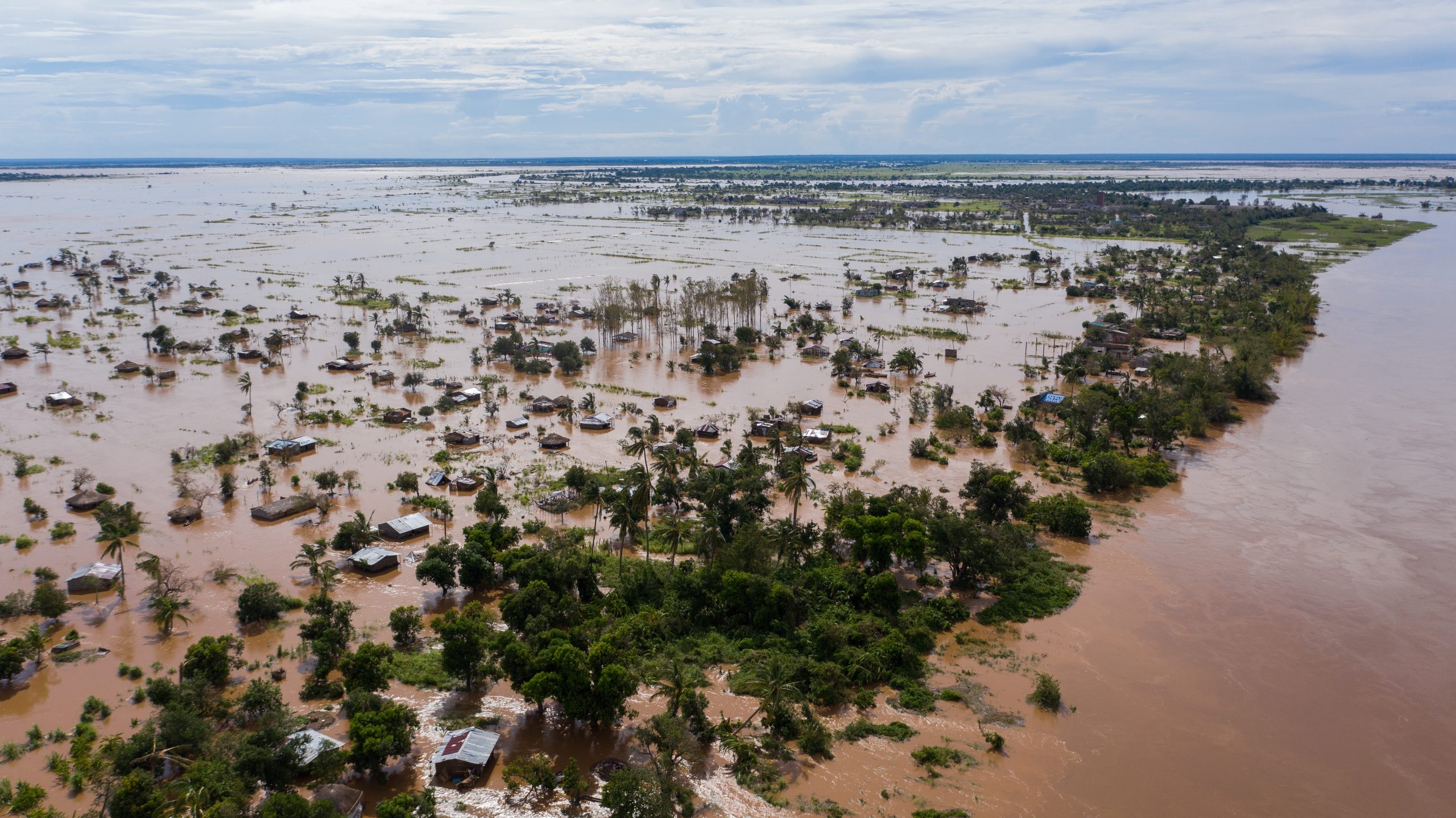The climate finance crisis
As Mozambique faces escalating climate disasters, it is shut out of the very funds meant to protect it.

The aftermath of Tropical Cyclone Idai in Mozambique. Image © bpcreativedesign via Shutterstock.com.
International climate finance, designed to protect the world’s most vulnerable nations from climate catastrophe, has created a system where responsibility and consequence operate in inverse proportion. After all, the countries that have had virtually no contribution to the climate crisis are condemned to face existential threats to their very survival, while the wealthy industrialized nations that traded the health of our planet for a GDP boost remain largely shielded from its worst effects.
Yet this system excludes the very beneficiaries it was intended to serve, a far cry from the mechanism of protection it was envisioned to be. Perhaps nowhere is this more apparent than in the coastal plains of Mozambique, where Mother Nature’s seemingly endless barrage of cyclones routinely wreaks havoc, exacting revenge on undeserving communities that have done little to anger her.
These are the same communities that remain locked out of the very mechanisms designed to protect them. This paradox is all the more befuddling considering that the culprit is not, as it often is, a lack of funding; in fact, in 2022, the OECD reported that “developed countries materially surpassed their USD 100 billion climate finance commitment.” The question is: If resources are in such plentiful supply, why is it then that less than 10 percent of climate finance reaches the countries most vulnerable to climate change? The answer lies in a system that has transformed abundance into scarcity through its very design.
Of the USD 115.9 billion in climate finance mobilized in 2022, the majority flows to middle-income countries with established institutional capacity, while the least developed countries—those facing the most severe climate impacts—receive disproportionately small shares. Mozambique’s exclusion is the unfortunate victim of the institutional barriers that systematically favor administrative sophistication over climate vulnerability. The structure of international climate finance centers around the concept of “bankability,” the requirement that climate projects demonstrate measurable financial returns to secure funding. This ultimately yields a system that conditions access to resources on elaborate feasibility studies, comprehensive risk assessments, and detailed financial projections. Unwittingly, these requirements presuppose the very institutional capacity that underdevelopment has denied.
The result? An absurd arrangement where countries with established bureaucratic infrastructure navigate funding mechanisms with ease, while nations confronting existential climate threats find themselves penalized for their lack of resources. The current regime embodies what amounts to a fundamental category error..
This category error is most evident in the impossible task of quantifying climate adaptation’s primary benefit: avoided catastrophe. How does one calculate the economic value of a cyclone that never destroys a village, or a drought that never forces mass migration? The commercial approach demands measurable returns precisely where measurement becomes meaningless, creating a system that systematically fails to account for the very outcomes it purports to achieve.
The predominant focus on mitigation over adaptation serves only to exacerbate this perversity. While multilateral institutions engage in intricate debates over carbon-pricing mechanisms and emission-reduction targets, Mozambican communities require immediate investments in flood defenses and drought-resistant agricultural systems. These adaptation measures, however essential for survival, cannot conform to the quantification that contemporary finance demands.
The result is a system that prioritizes abstract carbon credits over concrete seawalls, condemning vulnerable communities to drown in bureaucratic indifference while the waters rise around them. The shortcomings of the climate finance system yield detrimental consequences for the communities on the front lines; for Mozambique, it encompasses the collapse of agricultural systems across a nation already scarred by colonial extraction.
Mozambique’s rain-fed agriculture, feeding over 80 percent of the population, will be devastated by the two-pronged onslaught of rising temperatures and erratic rainfall. Prolonged droughts will deplete soil moisture and groundwater reserves, forcing farmers to abandon fields that have sustained communities for generations. Simultaneously, intensifying cyclones will destroy crops at harvest, wash away topsoil, and contaminate coastal fresh water with salt water. Add to that an explosion in pest and disease pressures as warmer temperatures expand the range of agricultural pathogens, and small-scale farmers lacking drought-resistant seeds or irrigation will watch their livelihoods evaporate into thin air.
Consequently, the World Bank projects that climate change will push an additional 1.6 million Mozambicans into poverty by 2050, no small feat for a nation of only 33 million people. That’s not to mention the relentless human cost of the crisis we’ve erected: Cyclone Idai’s 2019 assault claimed over 600 lives, while recent cyclones have killed 500 people and displaced half a million across the region. Each disaster brings not only a reminder of the policy shortcomings that failed to avert it but also a warning that the tragedy is merely the latest in a procession, each more unforgiving than the last.
This systematic exclusion constitutes a betrayal of the fundamental principles underlying international climate cooperation. If merely meeting their material financial quotas absolves wealthy nations of their climate obligations while those very resources never reach the populations most at risk, then climate finance ceases to be meaningful climate action, traversing into nothing more than sophisticated moral laundering.
Any attempt to address the exclusion of countries like Mozambique hinges on the fundamental restructuring of the international climate financial architecture to prioritize vulnerability assessment over administrative capability. This demands fast-track mechanisms for highly vulnerable countries, with simplified processes that acknowledge the constraints under which these nations operate.
Capacity building must be reconceptualized as integral to climate finance rather than a prerequisite for accessing it. This reconceptualization proves transformative in how we understand the relationship between institutional development and climate protection, treating capacity building as both a means and an end of climate interventions rather than a barrier to accessing them.
The international community stands at a crossroads: construct a system that serves those most at risk or continue the elaborate charade of climate action while abandoning the world’s most vulnerable communities to an increasingly hostile planet—all in service of maintaining the bureaucratic sophistication that has become our most sacred, and most lethal, ritual.



